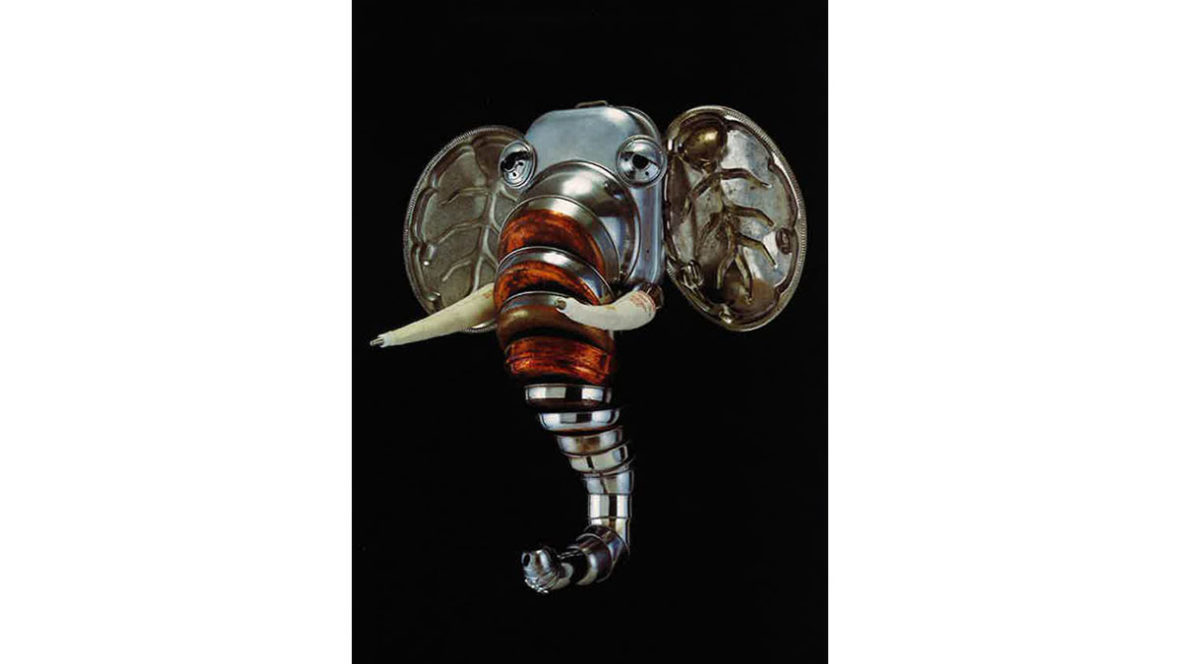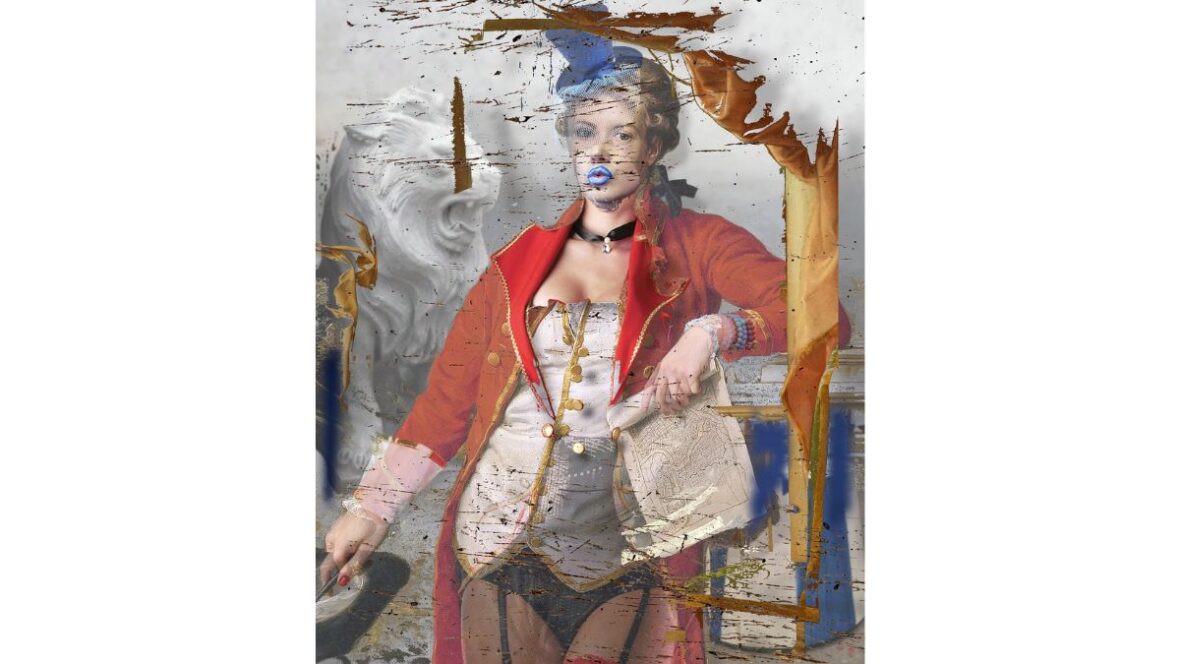Trashformations:
Recycled Materials
in Contemporary American
Art and Design
Exhibition Statement
Recycling in America is as old as the nation itself. Like our forefathers in the eighteenth and nineteenth centuries, we pass on to our children and heirs our cherished possessions and keepsakes. We buy automobiles and houses that often have had several owners, and we haunt yard sales and thrift stores for used treasures. Diminished landfill space for trash, and dwindling natural resources, have forced governments and their citizens to recycle used paper, metal, glass, and plastic for remanufacture into new products.
Artists have always seen creative possibilities in trash. Intrigued by the form, color, and texture of found objects, contemporary artists have transformed them into beautiful and provocative works of art. Similarly, in recent years, contemporary designers have exploited the cast-offs of others to create new and functional objects from them.
Organized by guest curator Lloyd Herman for the Whatcom Museum of History and Art in Bellingham, Washington, TRASHFORMATIONS: RECYCLED MATERIALS IN CONTEMPORARY AMERICAN ART AND DESIGN was assembled to demonstrate the creative evolution of recycled materials and found objects in American art and design. The exhibition reminded the viewer that while recycling is necessary to sustain the planet’s resources, it is equally important to buy wisely, use less, and keep products longer to reduce the need to recycle.
TRASHFORMATIONS: RECYCLED MATERIALS IN CONTEMPORARY AMERICAN ART AND DESIGN was made possible, in part, by grants from the Washington State Arts Commission and the Institute of Museum Services, Washington, D.C.
Nineteenth century crazy quilts, pieced quilts, weathervanes made from scrap wood, and rag rugs are a treasured legacy of America’s tradition of recycling. Indeed, throughout our history, especially in times of war and economic depression, Americans have learned “to make do”, saving rubber bands and tinfoil and recycling gift wrap and other items.
For the past one hundred years, artists have seen creative possibilities in cast-offs. Pablo Picasso, one of the foremost artists of the twentieth century, fashioned a bull’s head from a discarded bicycle handlebar and seat, while Marcel Duchamp, a founder of the Dada movement, asked viewers to see sculpture in a common snow shovel. During the 1920s, Alexander Calder began to make whimsical animals from coffee cans, and in the 1930s, Wharton Esherick designed and constructed chairs from a shipment of unwanted axe handles.
In the 1950s, Robert Rauschenberg began to create what came to be known as “combine” paintings and sculpture, which demonstrated his strong interest in the expressive possibilities of junk as an artistic medium. In recent years, John Chamberlain used auto body parts – squashed fenders, broken doors, twisted bumpers, and dented hoods – to create dynamic and expressionistic works of art, while Louise Nevelson created poetic and evocative sculptural compositions from scrap wood.
Over the years, artists have built houses from bottles or newspapers and created yard art from scrap wood and bicycle parts. Simon Rodia’s nine monumental towers, encrusted with a mosaic of broken tiles and pottery in the Los Angeles neighborhood of Watts, are landmark examples of a self-trained artist’s use of discards and bear eloquent witness to the power of the human imagination.
Artists alone can’t use a fraction of what Americans discard daily, but their examples may help others look at trash from a fresh perspective. Because art supplies are often expensive, discarded goods liberate many artists’ creativity and allow them to experiment freely. Sometimes their exploration of “what if?” possibilities leads to a lifetime commitment to using found objects, or to the development of replicable design.
Innovative and elegant in construction and design, and often imbued with symbolic meaning, each of the works in the exhibition makes a unique and eloquent artistic statement. Some of the objects were designed as vessels, ranging in shape from traditional to abstract. Other pieces, both two- and three- dimensional sculpture, were made primarily for their aesthetic value and were intended as works of art. Some objects were designed for personal adornment, such as jewelry and clothing. Others have practical environmental functions, serving as furniture, lighting, clocks, and wall coverings.
The artists that were included in the exhibition come from a variety of backgrounds. Some are self-taught artists, while others are trained in fine arts or industrial design. Some respond to the interesting form, color, or texture of a found object, while others find symbolic meaning in the cast-off or discard. However, each of the artists that were included in the exhibition expressed a fascination for the found object and the challenges that come from creating a new object from trash. Moreover, each artist had a strong belief in the ordinary and its ability to be transformed into the extraordinary.
Curbside recycling programs are so successful in communities across America that 80% of citizens participate, reducing garbage destined for landfills. Everyone benefits; recycling-based manufacturing takes less energy than processing virgin materials, and dependency on natural resources is reduced along with pollution and environmental damage. The market for recycled materials is growing, helping to reduce processing costs along with garbage collection costs. However, we still recycle less than one-half of our garbage, and only a couple of plastics are recyclable thus far.
The diverse products manufactured in the exhibition demonstrated some of the creative possibilities. Deja Inc. manufactures a line of shoes and sandals from such diverse materials as metal, soda bottles, magazines, coffee filters, and tires. Colin Reedy of Meta Morf Inc. has designed chairs and tables from a variety of new construction materials developed from discards. Roland Simmons’ sculptural Lumalight lamp designs are made from 100% recycled paper, while Lisa Ziff’ s sensuously curved vases are cast from recycled aluminum. They are among a number of American designers and manufacturers who see economic benefits in recycling, and know that their products are as attractive and practical as those made from virgin materials.
Curator
Lloyd E. Herman
Artists
Abrasha
Harry Anderson
Clayton Bailey
Harold Balazs
Boris Bally
Teresa Barkley
Ron Baron
Don Baum
Tony Berlant
Harriette Estel Berman
Chris Berti
Sharon Boardway
Ken Bova
Gaza Bowen
Kathy Buszkiewicz
Gordon Chandler
Randall Cleaver
Katharine Cobey
Helen Cohen
Gloria Crouse
Deja, Inc.
Marita Dingus
Lynn Di Nino
Paul Di Pasqua
Robert Ebendorf
Wharton Esherick
Lisa Fidler
John Garrett
David Gilhooly
Laura Griffith
Polly Harrison
Tina Fung Holder
Al Honig
Mildred Howard
Kate Hunt
Kimberly Kelzer
David Klein
Sheila Klein
Rolf Eric Kuhn
Ken D. Little
Lynn Ludemann
Daniel Mack
John Marcoux
Donna Rhae Marder
Eric Margry
Paul Marioni
Ann Troutner
Johanna Nitzke Marquis
Richard Marquis
Margo Mensing
Rik Nelson
Jim Opasik
Frank Palaia
Ro Purser
Debra Rapoport
Colin Reedy
Bird Ross
Ed Rossbach
Roy
Remi Rubel
Rita Rubin
Mitch Ryerson
Arturo Alonzo Sandoval
Willy Scholten
Roland Simmons
Karyl Sisson
Kiff Slemmons
Jeff Smith
Michael Stevens
Missy Stevens
Leonard Streckfus
Brian Swanson
Joy Taylor
Sam Verts
Flora Walters
Stephen Whittlesey
David and Roberta Williamson
J. Fred Woell
Isaiah Zagar
Lisa Ziff



